PROMISE LITTLE, BUT DO MUCH Learning foreign languages is like becoming a completely different person. I understood the meaning of these words during my language studies. In September 2015, from the 5th grade, we were taught English, and our first lesson began with the words of our teacher: "To have another language is to possess a second soul," that is, "Knowing another language is having a second soul". Although I did not understand the meaning of these words, which I heard for the first time in this language, they gave me a special feeling. From that day on, I had a desire to learn English perfectly and to become an expert in this subject in the future. Over the past years, I have sincerely tried to learn the English language perfectly, and as a result, I have taken pride of place in many competitions and science Olympiads. In particular, during the 2018-2019 academic year, "What do you know about China?" was held at the republican level in cooperation with Dono Publishing LLC and the Embassy of the People's Republic of China in Uzbekistan. Participating in the competition, I took pride in my place and received a diploma and two valuable gifts: a tablet and a printer. Also, in April 2020, at the initiative of President Shavkat Miromonovich Mirziyoyev, I took the proud 1st place in the online olympiad in the English language among 9th graders held by the Fergana regional administration and a number of other organizations, and I received a diploma, a letter of thanks from the governor, and a collection of more than 50 books, which are considered the most valuable and precious gift for me. I started preparing for the international IELTS exam in January 2021, and in September I passed the exam to test my knowledge and got a B2 level. Of course, it was not easy to achieve all these achievements. I had a lot of sleepless nights when I struggled to learn. But my great goal, which always motivates me and encourages me to move forward, is to study in foreign higher education institutions and share the knowledge I have acquired with the youth of our country. It was also to justify the trust of my parents and teachers. Over the years, I have not only learned another language, but my thinking has also changed completely. One of the main reasons for this is that I read many books written in English. Also, as a result of my online conversations with my foreign friends and peers, I got a lot of information about their lifestyle and education system. My teachers and friends have often pointed out that my worldview has expanded a lot during this time. In order to take the first step toward fulfilling my dreams of several years, in April 2022, I applied and was accepted to the bachelor's degree program at the University of Arizona in the United States of America. At the same time, I became the owner of a grant in the amount of 88,000 US dollars. After that, I applied to the "El-Yurt Umidi" foundation scholarship competition and was accepted to the 2nd stage interview stage. But for some reasons, I decided to study my bachelor's degree in Uzbekistan and then my master's and PhD degrees on abroad. I don't regret it too much, because in August 2022, after successfully passing the university entrance exams, I was accepted to study at the Namangan State Pedagogical Institute on the basis of a 100% scholarship. Even after entering the study, I achieved many achievements; for example, I participated in the "Speech Contest" organized by our institute in November, took pride in my place, and received a diploma and a present. My first article was published in the 1st issue of 2022 of the "Education and Development" scientific-methodical magazine on the topic "Vocabulary Learning Strategies of Secondary School Students." I also became a certificate holder by participating in an online course on Python at the "Digital Generation IT Camp 2023," held on January 5–9. Apart from this, I have become a certified WordUp coach on January 8th in 2023. Besides that during April 4-8 as part of the World Bank's project "Strengthening the Social Protection System of the Population", I participated in a 35 hour seminar-training on the topic "One step to entrepreneurship" and received a certificate upon completion. On may 5th I participated in Climate Science Olympiad 2023 and became quarter finalist. At the same day, my second article has been published on the 1st issue of 2023 "Scientific Journals of Talented Students" scientific-methodical magazine on the topic "Using English songs to improve listening comprehension of young students". In the future, I would be very happy if I could contribute to the education of young people in my conuntry who want to learn the language, and at the same time, I could give them my modest support to develop and achieve high goals in this field.The 21st century is the age of information technology. Currently, 63% of the information available on the Internet is in English, and the best literature in any field in the world is written in English. I also have the intention of skillfully translating this information and these books into Uzbek language. In conclusion, as I literally open the window of opportunities in our independent Uzbekistan, I convince myself that I am not taking a step without a purpose and I keep walking up the stairs to achieve my goals. Mamadaliyeva Sarvinoz Azamat qizi Student of Namangan State Pedagogical Institute
Poetry from Madina Abdullayeva
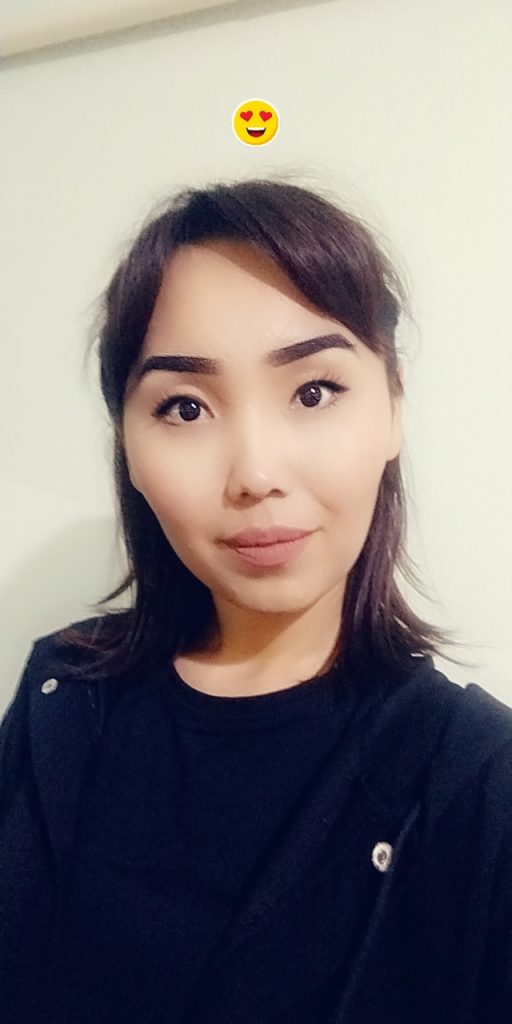
One day, a person from the House of Mercy and Generosity came to our school and told us to write a letter to the children there. We came with our classmates to write letters to our peers there. I started to write a letter, but for some reason I got discouraged. I thought that whatever I write, whatever I write will make them happy. Then I finished the beautiful lines and sent my precious bead inside the letter. A few days later, I received a reply to my letter. He wrote my name on the letter and sent it. Reading the letter, I was very moved. I started thinking about them from that day. How wonderful it is to listen to children in need and their dreams and hopes. They are always waiting for their parents to come to where they live. They do not stop hoping. We should learn patience from them. When they looked out of the window, they saw their parents holding their children for a walk, carrying ice cream. They look with envy at those who walk. Among these children, there are no children who are hopeless and have lost their desire for life. They dream that their loved ones will come for so many years. But it is natural for them to become uninterested in life after it is no longer useful. They promise themselves that they will never leave their child here!!! There are no people who do not let them have such hopes. Among us are kind and generous people who bring gifts and money for them.\ Seeing their kindness, the children say that when they grow up, they will extend my hands of love and generosity to children like these people. A child is the greatest blessing of God.....! God entrusts the child to people as a TRUST. But BETRAYING DEPOSIT is a big sin.... Think twice before abandoning your child. A child is a blessing created from your body and soul. He is the successor of your lineage, the builder of the foundation of the future. Do not break their dreams and happiness. Don't give children the world - children will give you the world... Only if you stand in front of them with strength and confidence.
Poetry from Diyora Kholmatjonova
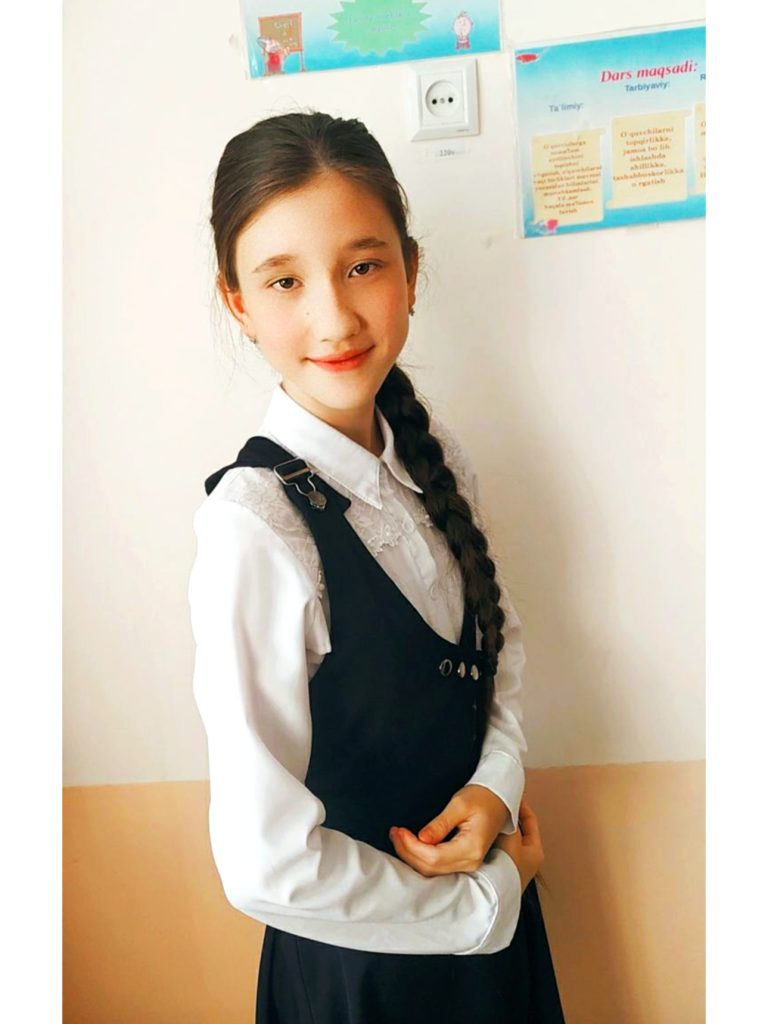
I am not a person who is easily forgotten One day I will go, I will go to the sky The distant sky is calling me. But you will write my name in your heart I am not a person who is easy to forget. I will never leave you alone without disappearing in your dreams You heart is broken, there is no cure. But you won't find it, then it's too late I am not a person who is easy to forget When those you trust leave you When your heart is broken by the unfaithful. You still remember a lot when your heart beats I am not a person who is easy to forget One day they will pierce your heart like a blade, Missing hurts your heart every day. But it will be late now, I won't be there that day I am not a person who is easy to forget. You can't let it go now, You can't take your eyes off of me. It's never too late, you can't forget. I am not a person who is easy to forget
Essay from Akhmadjanova Muslimakhon
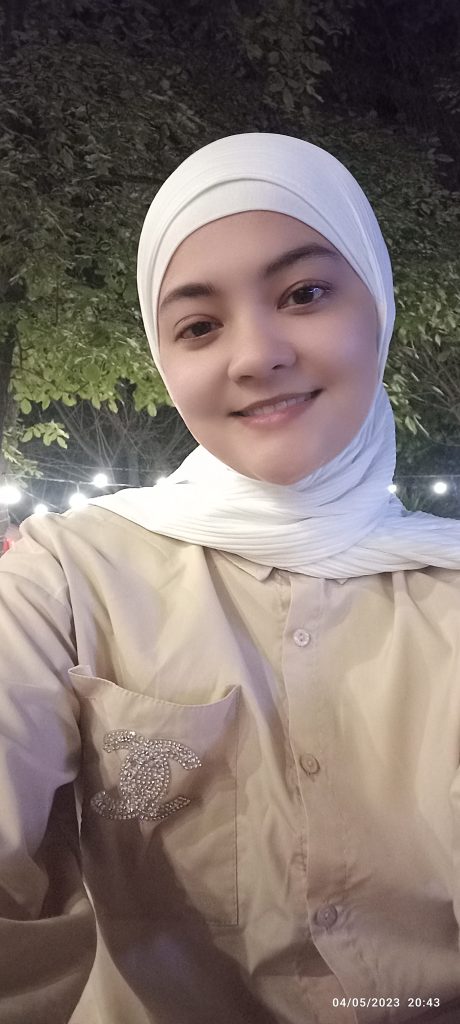
WE ARE AGAINST CORRUPTION
AHMADJONOVA MUSLIM
Student of the Faculty of Philology
Abstract: This article discusses the fact that corruption is a powerful force that threatens the future of society and the nation and its history.
Key words: corrumpo, “Unbiased gifts”, Holy Qur’an, Hadith-Sharif, HEMS program,
Being is created so that it always keeps two contradictions in its bosom. For example, qualities such as good and bad, goodness and writing, justice and injustice are always alive in people. They cannot be completely destroyed, indeed, but we have the ability to prevent their occurrence.
Corruption is a powerful force that threatens the future of society and nation. It did not appear today or a few years ago. Its roots go back to the scenes of history. First of all, if we focus on the meaning of this word, Corruption – (Latin: corrumpo – bribery) is the practice of directly abusing the rights granted by an official for the purposes of personal enrichment. . It is completely wrong to think that there was no corruption in the past centuries, because we can see various forms and traces of corruption. Although it was not formed as paper money, since ancient times, jewelry, gold and silver, or animals were “gifted” to high-ranking people in order to gain power in the tribe or to occupy a certain position in the state system. If we look at the past of ancient Rome, even people were among these gifts. “Impartial gifts” destroyed not only human dignity, but also the entire society.
Although it was not called corruption in those times, historical sources testify that this process has existed since ancient times When a person commits to this cruel and terrible vice, he destroys not only himself, but also all the people around him. An example of corruption is like a spider’s web. Any insect caught in its web becomes food for the spider, and it is impossible to get rid of it. It should be noted that this harmful phenomenon occurs in all countries, regardless of whether they are big or small, rich or poor. It does not choose space or time.
There is no turning back for a person who steps into corruption, so who doesn’t like gifts and money that come without hard work? Only a person with faith and education can know that such things are forbidden. This phenomenon is turning into a vice as time goes by. This vice is the cause of impoverishment of a person not only materially, but also spiritually. What will be the future of young people who grew up eating the dirty food!? Aren’t these young people the future of society and nation? So, we are really ruining our future with our own hands!! A true Muslim who adheres to the duties and sunnahs of his religion, who has acquired manners and education, does not step into bribery, the so-called corruption. It was also revealed in the Holy Qur’an, which was the word of God: “Do not take other people’s property unjustly and do not bribe your governors from your property to take what belongs to others.” Even the Bible says: “Do not accept gifts, because a gift makes the blind see and changes the truth.” In the Hadith-Sharifat, it is mentioned that the bribe giver and those who receive it are cursed, and even the person who acts as an intermediary in the bribe will be cursed by God.
Corruption destroys the nation’s destiny and national identity. It prevents young people from being confident about the future. People’s trust in the state will die. A person who has been wronged somewhere, affected by corruption, may not return to this place at all, or he may return to this place intentionally to establish justice.
Prevention and fight against corruption today a lot of work is being done. In particular, on October 14, 2016, President Shavkat Mirziyoyev approved the bill “Combating Corruption” by the Oliy Majlis and entered into force on January 4, 2017. A lot of work has been done in the education system, which is close to us and not far away. For example, a new system has been devised in this field to prevent bribery and embezzlement of grades in the educational process. All higher education institutions were gradually transferred to the credit-module system, and today in schools the daily.com program, and in higher education institutions, the HEMS program continues to work and provides transparency in the educational processes of many of our young people. It is no exaggeration to say that these programs, which also ensure the effectiveness of teaching, have established justice in this field. Such and many other effective works are spreading throughout our society and entering the soul of the people and the nation. All methods are being used to fight corruption, as if it is not an area where corruption has not penetrated, and effective results are being obtained.
If the movement is done from two sides, not from one side, the finish line will be reached faster. In other words, we cannot fight corruption only through state bodies and effective laws. Implementation of these laws is not only the responsibility of the state, but also of us. It is the duty of every educated and moral person to eliminate corruption where we see it, not to touch it and not to step on this path, and by developing legal awareness throughout the society and acquainting each person with his personal rights. we will have eliminated the initial stage of corruption.
We young people are against corruption. We will create a just and great future, and on this way, the President’s trust in us young people, as well as every action they take for our people, the decisions they make, and our Constitution, which is the source of our happiness, will be the guide. Let’s fight corruption together. Together we will become an invincible force!
Akhmadjanova Muslimakhon Anvarjon’s daughter was born on April 19, 2003 in Torakorgan district, Namangan region, Uzbekistan.
Essay from Aziza Amonova
ENHANCING STUDENTS’ CREATIVE THINKING THROUGH INTERNATIONAL ASSESSMENT PROGRAMS
Annotation: This article describes the concept of creative thinking in a broad sense and mentions that this concept is important for students' future research. The PISA program, which is considered one of the international researches, requires creativity and the opinions are expressed about the further improvement of the quality of education
Key words: skill, creative thinking, divergent thinking, science, mathematics, problem, platform, domain,
INTRODUCTION
The main task of education is to form the skills that the student will need today and in the future to lead a successful life in society. Creative thinking is an important skill that today's youth should have. These skills help them adapt to a world that is constantly and rapidly changing, requiring workers with "21st century" skills that go beyond simple literacy. In general, today's student is expected to work in the future in fields that do not even exist now, to solve new problems through new technologies. A number of researchers have tried to identify the mental capacities necessary for creative thinking.
The importance of developing creative thinking at school is not limited to the labor market. School is important for young people to discover their abilities and skills, including creative talents. Also, creative thinking supports students' learning by interpreting events, experiences, and behaviors in a new and personally meaningful way. In order to increase the student's motivation and interest in the school, it is necessary to establish new forms of education that take into account the creative potential and enthusiasm of all students.
This can especially help students who are not very interested in the educational process, and it will help them express their opinions and develop their potential. the concept of convergent and divergent thinking has greatly influenced research in this field. Analytic thinking is generally defined as the ability to use conventional and logical strategies to search, understand, and make decisions based on information gathered in order to find answers. Divergent thinking, on the other hand, is original by applying new approaches and forming unexpected combinations from existing information, as well as using the capacities of connections, thinking, and transformation, such as semantic variability and fluidity. is the ability to develop ideas.
REFERENCES AND METHODOLOGY
Divergent thinking is also described as the ability to abandon ready-made instructions, to search for different solutions to problems, to resort to unexpected measures when all other means are exhausted, to look at problems from a different point of view, to abandon ready-made methods and try new ones. In general, divergent thinking is often about generating new, unusual, and unexpected answers. Creative thinking is often described in terms of divergent thinking, and most research to date has been devoted to studying the mental processes associated with divergent thinking.
But the research is analytical or decision-making clearly shown that mental processes of similar thinking, such as the ability to do, are important for creativity. For example, the ability to generate new and valuable ideas may depend on the implementation of other processes, such as problem definition. In fact, it was found that the success of art students in defining the problem is closely related to the criteria of aesthetic value and originality of the pictures they draw. These criteria, in turn, depended on the long-term success of these students as artists. Schools can promote educational methods that support the mental skills and approaches necessary for creativity, and learning to form mental representations has been shown to improve student creativity in science, mathematics, and ICT.
The literature suggests that the more domains covered in an assessment of creative thinking, the better the coverage of the construct. However, some practical and logistical limitations of the PISA study affect the possible domains to be included in the PISA program. The first of these is related to the age of those being tested. Given that the target audience of the PISA study (15-year-old students) has limited knowledge and life experiences, the domains chosen for assessment should be based on knowledge and experiences common to all students in the world (such as drawing, writing or problem solving). The domain being tested (and related tasks) should also reflect a realistic expression of the creative thinking that a 15-year-old student can demonstrate in this context.
The second limitation is related to the time allotted for testing. According to the structure of the current PISA assessment, one hour is allocated to the test to assess students' creative thinking. This means that the number of possible domains must be limited so that a sufficient amount of data can be collected for each domain. Since the purpose of the PISA study is to provide benchmarks of test results at the country level rather than individual test results, different forms of tests can be used interchangeably. In this, students solve a diverse mix of tasks (with some accidental overlap) within the domain.
However, ensuring that students obtain reliable indicators of national test performance in each domain requires that sufficient time be allocated to each domain's task and limits the number of tasks that can be covered in an assessment. A third limitation is the implementation of the test of creative thinking in the standard PISA test-taking platform related to the obligation. PISA tests are performed on a standard computer, which does not have a touchscreen or an Internet connection. The platform currently supports various forms of response input, including multiple choice, text input, drag-and-drop, hot-spot (clicking on an area within a text or image), chat interface, interactive charts, and graphics.
Although it is possible to add new functionality to the platform during the development of this assessment, such as a drawing tool, selection of assessment areas, the technical limitations of the platform must be taken into account when developing the same tasks. The development of an international program for the assessment of creative thinking can lead to positive changes in educational policy and pedagogy. The PISA Assessment of Creative Thinking in Research provides a clear, reliable, and actionable assessment tool to help policymakers make evidence-based decisions. The results also fuel debates in society about the importance and methods of developing this important skill through education.
This activity in the international assessment program PISA is related to another project of the Organization for Economic Co-operation and Development aimed at supporting a new pedagogy for the development of creative thinking. The main task of education in creative thinking is to form the skills that the student will need today and in the future to lead a successful life in society. Creative thinking is an important skill that today's youth must have, and this skill will help them adapt to a constantly and rapidly changing environment that requires personnel with up-to-date skills beyond simple literacy. In general, today's students will work in fields that do not even exist in the future, for new skills for new problems will allow them to solve increasingly complex local and global problems through an unusual approach.
The importance of developing creative thinking at school is not limited to the labor market. School is important for young people to discover their abilities and skills, including creative talents. Creative thinking also supports student learning by interpreting events, experiences, and behaviors in new and personally meaningful ways.
Conclusion
A number of educational research studies have explored different methods of teaching or learning that increase the likelihood of knowledge and skill acquisition. Research shows that creative thinking can be effectively developed by working together in a team environment that allows for the creation of knowledge and skills. In other words, schools act as knowledge and skill-generating organizations, where students are actively engaged in creative and regular activities infused with new ideas.
When the process of creating knowledge becomes a purposeful activity that is an integral part of the educational process, that is, a type of everyday activity, Knowledge can also be created by "looking at the world with the eyes of questioning wonder." Looking at the world with questioning wonder is understood as the process of a student trying to understand the world, and it motivates students to put forward their own opinions about various phenomena. Students' creativity is reflected in their creative thinking skills, especially when most of the creative thinking process involves "invisible" tasks.
REFERENCES
1. Amabile, T. (2012), «Componential theory of creativity», No.12-096,HarvardBusinessSchool, http://www.hbs.edu/faculty/Publication%20Files/12-096.pdf (accessed on 28 March 2018). [59]
2.Amabile, T. (1997), «Motivating creativity in organizations: on doing what you love and loving what you do», California Management Review, Vol. 40/1, pp. 39-58, http://dx.doi.org/10.2307/41165921.
3.Guilford, J. (1956), «The structure of intellect», Psychological Bulletin, Vol.
53/4, pp. 267-293, http://dx.doi.org/10.1037/h0040755. [46]
4.Guilford, J. (1950), «Creativity», American Psychologist, Vol. 5/9, pp. 444-454, http://dx.doi.org/10.1037/h0063487.
5.Essex, C. (1996), Teaching Creative Writing in the Elementary School. ERIC
Digest, ERIC Digest., https://files.eric.ed.gov/fulltext/ED391182.pdf. [108]
6.Feist, G. (1998), «A meta-analysis of personality in scientific and artistic
creativity», Personality and Social Psychology Review, Vol. 2/4, pp. 290-309. [61]
7.Gajda, A., M. Karwowski and R. Beghetto (2017), «Creativity and academic
achievement: A meta-analysis.», Journal of Educational Psychology, Vol.
109/2, pp. 269-299, http://dx.doi.org/10.1037/edu0000133.
Synchronized Chaos Mid-December 2023: Within and Without
We continue to express sorrow over what’s happening in so many different parts of the world and encourage our readers to support people and the planet.

Also, we are hosting our Metamorphosis gathering again! This is a chance for people to share music, art, and writing and to dialogue across different generations (hence the name, the concept of ideas morphing and changing over the years). So far photographer Rebecca Kelly and English/Spanish bilingual poet Bridgett Rex are part of the lineup and more are welcome! This event is also a benefit for the grassroots Afghan women-led group RAWA, which is currently supporting educational and income generation and literacy projects in Afghanistan as well as assisting earthquake survivors. (We don’t charge or process the cash, you are free to donate online on your own and then attend!)
This will be Sunday, December 31st, 2-4 pm in the fellowship hall of Davis Lutheran Church at 317 East 8th Street in Davis, California. It’s a nonreligious event open to all, the church has graciously allowed us to use the meeting room.
You may sign up here for event reminders. RSVP appreciated but not required.
This month’s issue concerns our positions within time and space, sometimes pulling us deeper within our own psyches and intimate relationships and at other times drawing us outward into a broader universe, or simply destabilizing our normal perspectives. Join us as we venture Within and Without.
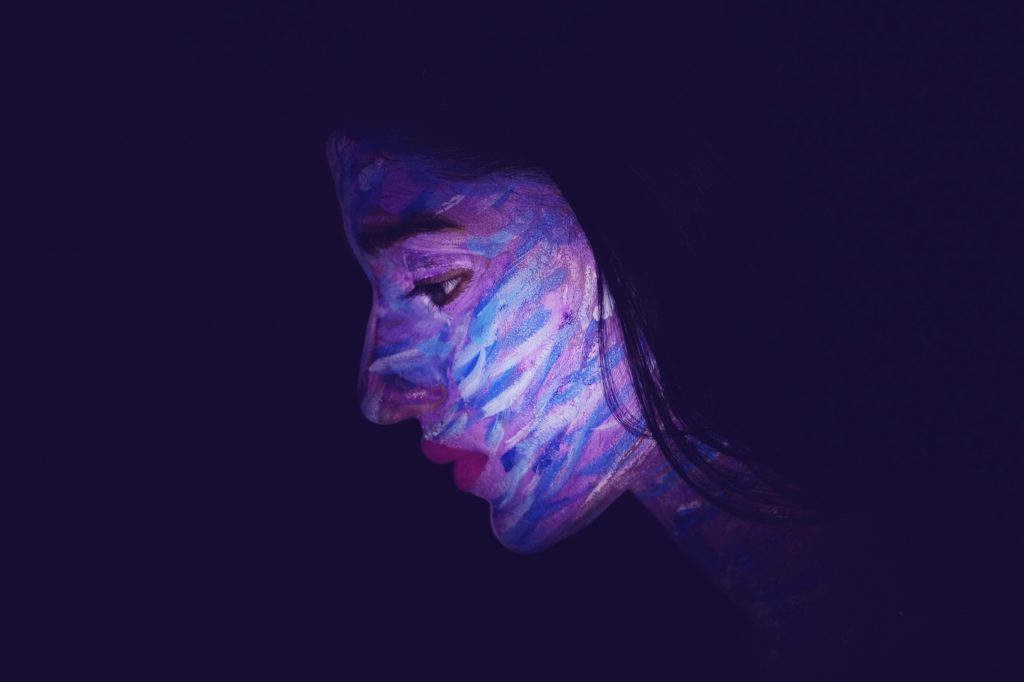
Niles Reddick’s dramatic pieces highlight the danger and mystery hidden within everyday life. Bill Tope’s piece illuminates the fluidity and risks of young people’s lives and travels during the American 1960s.
Helena Jiang explores how our mental states color our perceptions by taking us outside on a bicycle ride through the eyes of a grieving boy and out on a sailing ship through the eyes of an artist.
Sheila Henry illustrates the visceral experience of depression to encourage empathy for those who endure mental health struggles. Alma Ryan dramatizes anticipatory grief for the loss of a person who cares, but cannot truly understand her.
Thoreau famously claimed that many men live lives of quiet desperation. Returning poet J.J. Campbell must surely be among them, as his speakers seek to dull their souls as their hopes drift away.
Ari Nystrom-Rice illustrates the journey of a person facing intractable damnation.

Filip Zubatov tells us to stop lying to ourselves and set goals and take action and make the most of our lives. Jerry Langdon comments on the brevity of life with solar mythology as a metaphor and reminds us to tell our loved ones we care while we are still here.
Taylor Dibbert reflects on how many people only seek marital counseling when it’s too late. Kristy Raines looks back on romantic love and on life’s ups and downs from a mature perspective.
Abdurazokova Murad urges parents to set down their phones and pay attention to the growth and education of their children and also reminds us to make the most of the limited lives ahead of us. Bakhora Bakhtiyorova speaks to wise, balanced parenting while at the same time encouraging all people, especially young people, to seize the day and achieve their goals.
Sabrina Ishmurotova’s poignant poem illustrates a young girl’s longing for her lost father. Mokhinur Askarova speculates on who would miss her if she disappeared. Faleeha Hassan’s speaker remembers a complicated relationship with her mother, where love commingled with grief.
Boqijonova Madinabonu reflects on the love of family and how mothers are often the glue that holds families together, even after children grow up and move out.

Qodirova Madinabonu Mirzamaxmud praises the care and guidance of teachers in her poem of respect to them, while Lilian Dipasupil Kunimasa reminds us of the innocent wisdom of children who have not yet learned prejudices.
Annie Johnson evokes love that is both spiritual and interpersonal in her poetry, which celebrates the light and joy of Christmas.
A. Iwasa reviews the second issue of Signal, A Journal of International Political Graphics and Culture and concludes that the magazine holds wisdom from a variety of political and philosophical traditions.
Hauwa Jibrin cries out in anguish at war and brokenness in his country while Santiago Burdon expresses his support for the Palestinian people to find peace and self-determination. Aklima Ankhi celebrates the independence of her homeland of Bangladesh and shares her hope for peace in the world and freedom for all its people. Mahbub joins her in rejoicing in his home nation’s birthday, taking pride in his country’s founding as a victorious struggle of formerly oppressed people.
Daniel De Culla reminds us that the shiny veneer of the holiday season is not enough to cover over systemic injustice and brutalities, including religious leaders’ sweeping child sexual abuse under the rug.
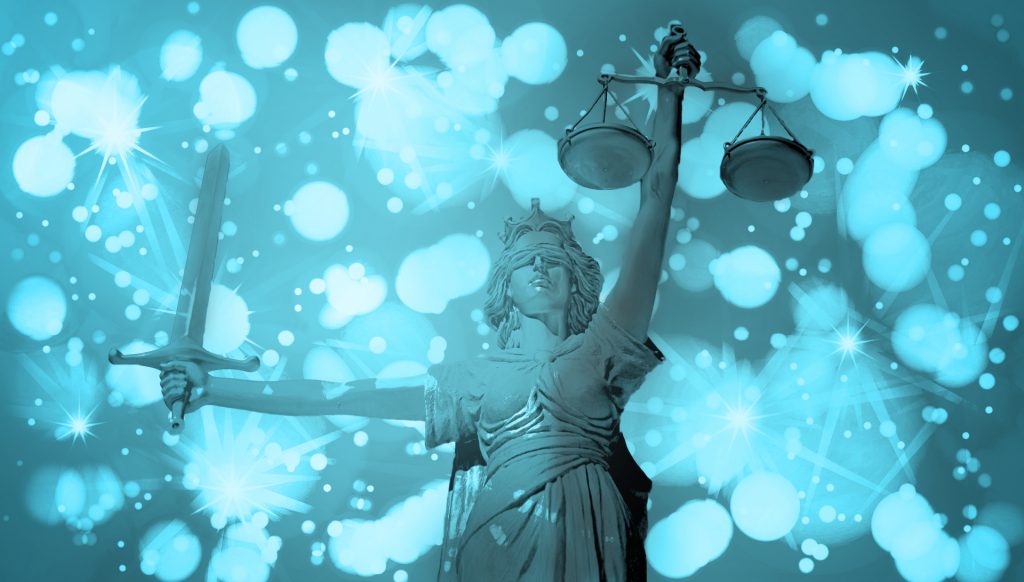
Noah Berlatsky calls out the financially exploitative nature of practices within the writing world and the struggle of many for just a chance to be seen.
John Mellender’s poem speculates on the true nature of courage, what gives us the strength, or foolhardiness, to throw our bodies against the iron bars of life’s injustices.
Mesfakus Salahin’s tale concerns a clever boy determined to keep honest and preserve his self-respect. Sayani Mukherjee speaks to remaining near the light of truth, even if you are alone with a small candle.
Stephen Nwankwo expresses his determined hope for the future of his country.
Bill Tope’s second story highlights the struggles of many young women to be believed and understood after sexual assault. Set during a time just a few decades in America’s past, the story shows an otherwise loving and caring mother who wants to empower her daughter, yet has her generational blind spots.

Isabel Gomes de Diego’s photography of children sightseeing in the city is tinged with wonder and joy, encouraging all of us to glimpse the world through fresh eyes.
Daniel De Culla’s images highlights juxtapositions, disparities and conjunctions within environments both natural and human-built.
Phil Demise Smith’s graphic novel chronicles and halts the movement of time and how it organizes chaos into a series of moments, the present.
Brian Michael Barbeito’s poems capture lush natural and seasonal environments: the sea, fields in spring and trees in autumn, in language both atmospheric and philosophical. In a similar, but more personified and romanticized, vein, Sreya Sarkar renders snowflakes into ballerinas that distract the sky and a lost thoroughfare.
Brian Michael Barbeito’s artwork aims to capture the spirits of places, both extreme closeups and panoramic vistas that incorporate nature and human construction and pose the question of how exactly we define “place.”

Don Bormon conveys the endurance and sturdiness of trees, both physically and ecologically as the backbone of so many ecosystems.
Texas Fontanella’s visual art connects a dizzying expansive explosion of angle and shape and color.
Z.I. Mahmud outlines ways in which the technical craft of cinematography affects the visual impact of storytelling in movies. Steven Mayoff probes the similarities and differences between writing prose and song lyrics.
J.D. Nelson brings more of his signature ‘graf’ poetry, with one liners stringing together images and sounds like a garland.
Grant Guy’s visual poetry melds Morse code, squiggles and graphics, absurdist humor, and oddly placed inspirational messages. Mark Young’s work juxtaposes varying units of sense into pieces that, oddly, flow together.
We hope the same is true of this issue, and we wish you a very happy holiday season.
Essay from Steven Mayoff
Waxing Lyrical
“Oh, mama, can this really be the end? To be stuck inside of Oslo with the Nobel Prize again.”
This was my Facebook post, a kneejerk reaction when I first found out that Bob Dylan had won the Nobel Prize for Literature in 2016. The same year that Donald Trump became president of the United States of America. I’m not sure which depressed me more. No, that’s a lie of course.
But it was close. One thing I knew for sure, in both cases guard rails were in danger of being torn down.
I consider Dylan one of my cultural heroes. When I first started writing in my late teens and early twenties in Montreal during the 1970s, it was mostly poetry with a growing interest in
lyrics, occasionally collaborating with musician friends and acquaintances. Although I had a deeply hidden aspiration to write fiction, I didn’t attempt prose until the early 1980s, while still
in Montreal, and then again in the mid-90s in Toronto. I only started focusing seriously on fiction after I moved to Prince Edward Island in 2001 at the ripe old age of 45.
These days I consider myself primarily a fiction writer who also writes poetry and lyrics. A bit of a turnaround from where I started. So, it is with some interest (and a healthy dose of bewilderment) that I find lyrics cropping up more and more in my fiction. It started innocently
enough with a short story that appeared in my first book. An anonymous love note causes a rift in the relationship between a couple because neither knows which of them it is for. One of them
is an aspiring songwriter and, seduced by the note’s poetic language, sets it to music. In my next book, the lyrics of a ditty written for the female protagonist by her composer cousin (with whom she is in love) become a recurring motif that acts as a kind of connective tissue in the novel’s non-linear structure. My latest novel includes lyrics for a satirical revision of Leonard Cohen’s masterpiece Hallelujah.
Now, if Leonard Cohen had been nominated for the Nobel Prize, I probably would have let it slide, since he actually wrote novels and poetry. Sure, Dylan wrote Tarantula, a book of stream-
of-consciousness rambling, but it’s hardly Nobel-worthy. As I understood it, he won the prize on the basis of his main body of work, his lyric writing. The grey area here is that many consider
Dylan a poet, which I can’t argue with. And yes, his lyrics have been compiled in books. Still, it just didn’t sit right with me.
The announcement that he had won spread like wildfire throughout the media. The controversy, at that time, was that he had not formally accepted the prize. The Nobel committee was growing frustrated that Bob was taking his sweet time in getting back to them. I was actually
holding out hope that he would turn it down. But after he finally decided to accept the prize, in his speech at the ceremony, he justified this decision by claiming to have been influenced by
literary giants such as Herman Melville. All well and good. I can make the claim that my fiction has been influenced by many great musicians and that music itself is a driving force in my
stories. But I don’t reasonably expect any of my books to be nominated for a Grammy or a Juno.
Or maybe I should?
The thing is, a snatch of lyric here and there is a common enough occurrence in many stories and one might think I was merely filling my quota, but lately I’ve begun to double down on the lyric content in my fiction. I recently wrote a yet-to-be-published novella set in a club that is a combination cabaret and bordello. As such, there is a song lyric in each of its nine chapters. The lyrics are meant to be commentary on the story as it unfolds and I think of the novella as a kind of literary musical. In my current novel-in-progress, a struggling middle-aged poet is writing a memoir of when, in his late teens and early twenties, he was the lyricist in a rock band during the
late 70s and early 80s. Every chapter will open with a full lyric, representing the songs on the unreleased album the band recorded. The impetus for the novel came from a long-held fantasy
from my adolescence of being the resident lyricist in a rock band like Keith Reid in Procol Harum or Pete Sinfield in the early King Crimson.
What exactly is going on here? The idea of lyrics as literature has always been anathema to me. In 1981 I began collaborating with a composer. For twenty years we wrote songs and tried our hand at a few musical theatre projects. During that time, I slowly gained some understanding of the relationship between words and music. Often, my deep-seated yearning to write fiction found its way into my lyrics, giving them a literary tone. At times, my composer partner found
them a bit unwieldy to sing and, in the course of setting them to music, words fell by the wayside. The music itself was acting as an editor and I soon learned that simpler language was better suited to singable melodies.
In the comments section of that original Facebook post, where I satirized the refrain from Dylan’s song Stuck Inside of Mobile with the Memphis Blues Again, I opined that if a lyricist had to win the Nobel Prize, it probably should have been Stephen Sondheim. Aside from being a great admirer of his work, I felt it somehow more appropriate that he be bestowed with such an honour. Perhaps it’s because in an interview, Sondheim shared some wisdom that his mentor, Oscar Hammerstein II told him. Essentially, lyrics are not poetry, they are text, but when paired with the right music they become elevated to poetry. This is often borne out by the fact that much of the time, lyrics don’t stand very well on their own and, when spoken as poetry, often
tend to fall flat. Whenever I see lyrics to popular songs on the page, I invariably hear the melody of the song in my head. The words don’t seem to make sense without the music. I don’t care if we’re talking about the lyrics of Bob Dylan, Leonard Cohen, Jim Morrison, John Lennon or anyone else who’s been saddled with the mantle of rock poet. The words carry the meaning, but it’s the music that gives them their thrust and etches them in our memories.
Maybe it’s my own particular bias, but I think that if anyone’s lyrics were going to be described as “literary” and awarded the Nobel Prize it would be Sondheim’s. Then again, maybe I assumed that he would have had the humility and the grace to turn the thing down.
Given my firmly entrenched view of the unliterary quality of lyrics, I ask again, what’s going on? What is this need to contradict myself and let lyrics sprout like unsightly weeds throughout my fiction?
Around the time I moved to PEI, my composer partner and I stopped writing together. I wanted to focus more on fiction and poetry and he had his own projects and interests to develop.
Another twenty years passed, during which I’d sometimes get an idea for a lyric and let the muse lead me where she may, even without the prospect of music to come. Every now and then, he
and I would mention writing again, although it never went any further than that. It was only during the Covid lockdown of 2020 that we finally started writing together once more. A few songs ensued until he asked if I’d be interested in collaborating on a rock opera, which we did over the next couple of years and it will soon be staged for the public.
One might expect me to be content to let my lyrics keep their natural place in the occasional collaborations with my composer partner. And yet, I found myself frustrated and could not help envisioning a more prominent role for lyrics in my writing life. When I began to see more
opportunities to include them in my fiction, I decided to throw caution to the wind, despite my nagging doubts about what I hoped to achieve.
While I still maintain that lyrics in themselves have no literary value, I’d argue that in the context of the novels and short stories in which they appear, they take on a life of their own. The fictional worlds I create only exist in the reader’s ability to make sense of squiggles on a page, to translate them into ideas, emotions, sights, sounds, smells, and tastes through the interactive magic that is reading. Is it too farfetched to expect that, presented with a song lyric in the context of whatever story is being told, the reader will also provide, through their own inventive mentality, the music that would elevate those words to the level of song, as if hearing it with the inner ear, the same way they experience a scene through the mind’s eye?
Perhaps it’s a lot to ask and, I suppose, a lot to expect.
All I know is that I’ve staked the last twenty or so years of my life on the power of words and my ability to coax an alternate reality from their meaning and their music. The craft and art of the writer culminates into what is best described as the illusion of authenticity. This is a bargain struck with the reader that their suspension of belief will pay off in a story that will engage their emotions and exercise their intellect. In the end, the writer’s journey is to push beyond the
boundaries of their own cherished beliefs and obstinate ideologies and use whatever is at hand as the connective tissue between where we are and what we can imagine.
The big question now is, if my next novel is miraculously nominated for the Polaris Music Prize, will I listen to my Sondheim angel perched on one shoulder or my Dylan angel roosting on the other? While it’s tempting to quote Stephen, regarding such an odd couple for my guiding voices with, “Isn’t it rich? Are we a pair?”, at this hypothetical point, I have to side with Bob’s sage observation: “When you got nothing, you got nothing to lose.”
